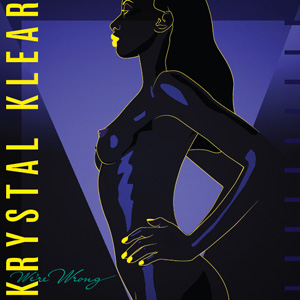Krystal Klear “We’re Wrong” b/w “From the Start”
While many producers are eager to push sonic boundaries into unheard realms, exploring far into […]

While many producers are eager to push sonic boundaries into unheard realms, exploring far into the reaches of future-this and future-that, Manchester-based Krystal Klear once again proves on his latest release for All City that there’s plenty of treasure to be found by digging through dance music’s past. On his return to the Irish imprint, he draws heavily from once-passé styles such as ’80s boogie, old-school electro, New Jack Swing, and ’90s house, but without sounding dated, retro, cliched, or nostalgic. On the contrary, his tunes sound fresh.
“We’re Wrong” charges out of the gate with a grooving piano riff similar to the one Hudson Mohawke employed in his remix of Krystal Klear’s boogie number from 2010, “Tried For Your Love.” Synths and a funky bassline work their way into the tune behind a cleverly chopped and rearranged female vocal sample that serves as the early centerpiece for the track. The first vocal snippet soon gives way, however, to another cut-and-pasted vocal hook, this one a male voice that gets filtered into the mix. The resulting production, with its steady four-on-the-flour and squarely house tempo (123 bpm), is less funky than Krystal Klear’s previous outings, instead entering the realm of straight-ahead house music.
“From the Start” begins with an expertly reassembled vocal sample filtering its way into the song over the top of smooth synth pads and a simple piano chord progression. The song continues with a mellow build-up until a swinging beat and bassline break through, and eventually climaxes with a dense piano rhythm before soft synth pads close out the proceedings. On both tracks, Krystal Klear relies heavily on the use of filter and phaser effects, which add emotion and depth to his relatively light production.
Even though Krystal Klear’s brand of house isn’t new territory, it does feel different from most producers’ work today, as it draws inspiration not only from the genre’s early roots, but also incorporates its last three decades of development of subdivision. Elements of disco, like the meaty piano chords, are in full effect, and old-school electro and boogie come through in the basslines and bounce of the tracks. The vocal samples, though rendered unintelligible through cutting and splicing, have a definite New Jack Swing feel to them. In their entirety, however, the tunes are most obviously similar to the wave of French house led by Daft Punk in the late ’90s and early ’00s. It’s doubtful, however, that Lennon went about directly trying to create retro sounds in his production; rather, his style seems to be the result of furious crate digging (likely for his sets as a Hoya:Hoya resident) and a deep knowledge of dance music’s eclectic past.

